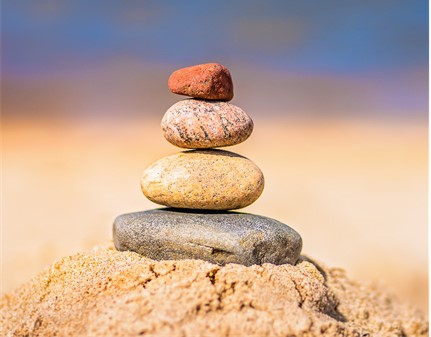The Elements of a Balanced Life
The importance of a work-life balance is discussed so frequently it’s easy to overlook that it’s a relatively new concept.
It wasn’t until the 1970s and 1980s that the theory of a work-life balance and its virtues was espoused during the women’s liberation movement.
While it has many practitioners today — and increasing evidence that it is necessary for proper physical and mental health — there is no one-size-fits-all definition of a balanced life.
And it doesn’t always involve work. Thomas Cothren of New York explains some of the key concepts behind the balanced life movement.
The Sensible Life Elements
Every life has a unique formula for “balance.” What’s a balanced life for a doctor is often not a balanced life for a teenager or a parent.
There are commonalities, however. According to experts, those seeking a more stable life should consider eight “pillars” or wellness dimensions to focus on one step at a time. Such pillars are seen as ways to integrate cohesion into one’s life gradually and effectively.
These broad elements are mental, physical, emotional, spiritual, social, environment, financial, and occupational. Though all have individual benefits and include unique approaches, and many share easy-to-apply qualities.
For example, positive mental health leads to confidence and growth. Emotional wellness impacts motivation and manages levels of stress. The pillar of spirituality also increases personal growth and encourages the development of personal values.
Other Approaches to a More Harmonious Life
Despite the hard “eight” rule of the pillars, there is no set number of concepts that automatically lead to stability.
Others keep it simple. Some break it down to having a healthy body and a healthy mind. Others pump up the number count to 12 main aspects of a balanced life.
There the aspects are more specific and include love, adventures, self-care, and intellect, as well as occupational skills.
There are historical thoughts about achieving a more harmonious life as well.
In the context of effective leadership, Joseph Harder, an adjunct associate professor at the University of Virginia Darden School of Business, notes that Eastern philosophies have long centered on how emotional reactions, spiritual development, physical health, and cognitive structures are all connected intimately.
Four main aspects comprise an interconnected self: mind, heart, soul, and body.

The Balanced Life Worksheet
While there are many different trains of thought about what constitutes harmony in life, there are more straightforward ways to work on it personally.
Try a worksheet like one outlined by Mentorist. It begins with listing 12 balance areas and then having a participant rate each on a 1-5 scale, with “one” being weak and “five” being extraordinary.
But it also goes a step further. For each area, one is asked to personally define what it means to them and apply their values and beliefs related to each area.
Those completing the worksheet are also asked to think deeper about what they feel a certain way about each area. For example, is love connected to anger? Is it hard to make friends and why? In this way, each person is motivated to create strategies they feel will help them achieve more of what they need in each area.
And in the end, the goal — and often the result — is personalized balance and unified life.


